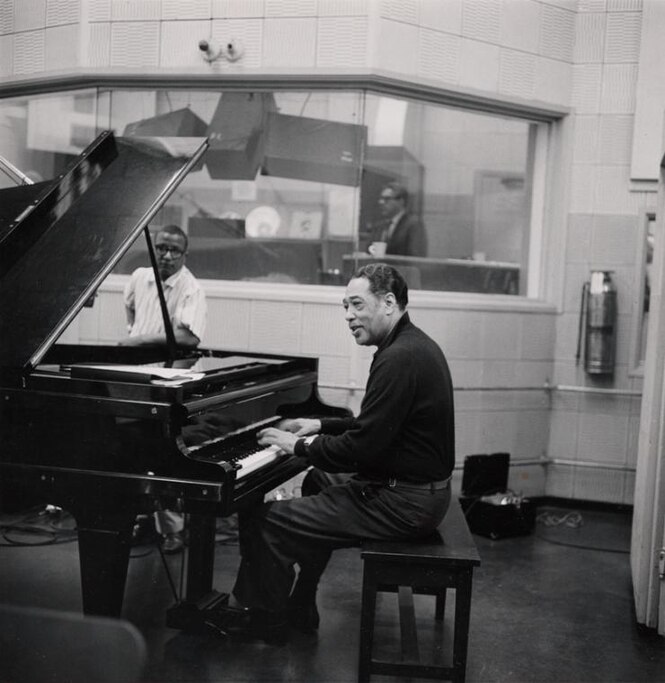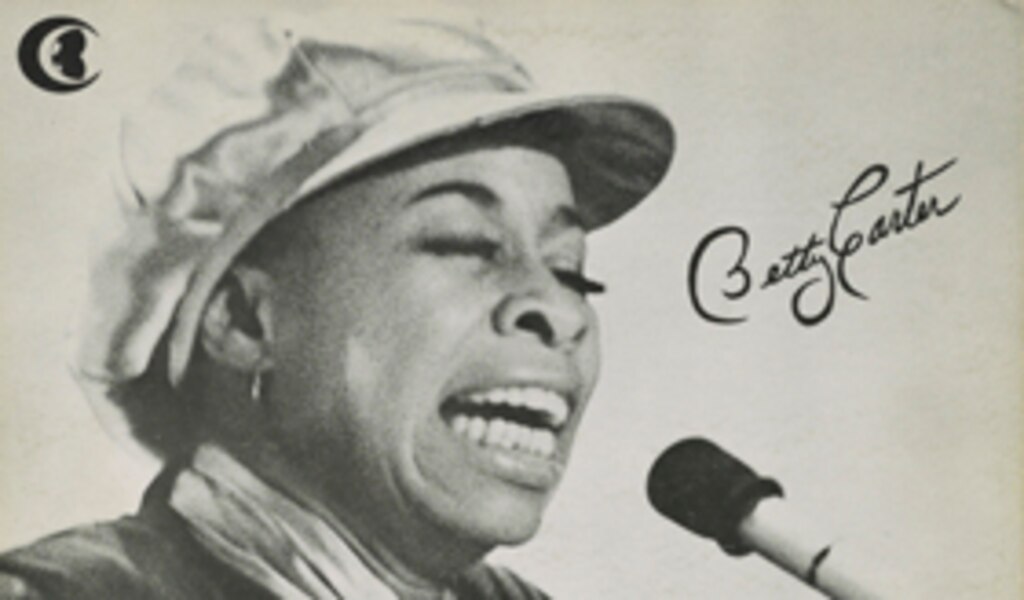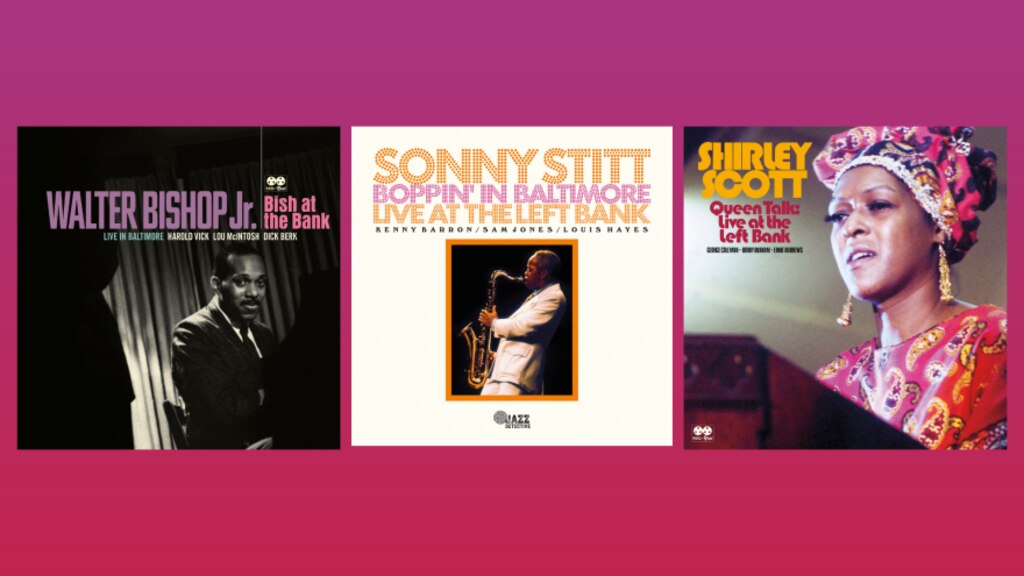Duke Ellington arrived at The Famous Ballroom in Baltimore on a Sunday afternoon in the spring of 1972 in a limousine with Babs Gonzales, one of the vocalists for his band.
The rest of the musicians, traveling by bus, had not yet arrived for their performance hosted by the Left Bank Jazz Society, recalled John Fowler, a founding member of the organization.
By 5 p.m., the other members of the Ellington Band still hadn’t arrived, but the show must go on. “Let’s hit,” said Ellington — one of the most revered musical, artistic and cultural figures of his, or any time — as he sat down at the piano, Fowler said.
Ellington began playing his songs, those familiar tunes that are foundational to what became known as the Great American Songbook during the 20th century. He also took requests and, in between sets, chatted with the audience.
That day was also a celebration of Ellington’s 73rd birthday, Fowler recalled, and would be one of the last opportunities to see Ellington on stage. He gave his final Carnegie Hall performance that summer. After that, he led the band in just a handful of performances before his death from lung cancer in the spring of 1974.

As Fowler shared that memory, another towering figure of jazz and his link to Left Bank came to mind.
“John Coltrane, one of his last live performances was at Left Bank,” said Fowler, who became a founding member of Left Bank in 1964 and served as its president and vice president. He missed that performance, though, because he was serving in Vietnam at the time.
It was, in fact, Coltrane’s final concert performance, on May 7, 1967. He died two months later from liver cancer.
The Left Bank Jazz Society concerts began entertaining audiences after venues such as the Royal Theater on Pennsylvania Avenue began closing. The largely Black audiences had other choices after desegregation, and once popular jazz scenes began fading away.
Fowler and jazz enthusiasts from a previous group, the Interracial Jazz Society, conceived the Left Bank Jazz Society. Another founding member suggested the name after a club called the Left Bank Parisian he knew from his time serving in France during World War II.
While mostly Black, Left Bank always had white members who bonded over love of the music, Fowler said. Through much of its history, the Left Bank Jazz Society had about 40 members, around 10 of whom weren’t Black, he said.
Left Bank Jazz Society milestones often align with milestones in Baltimore and American history. It was formed the same year the Civil Rights Act was signed. A review of its 1964-1974 concert listing shows two consecutive Sundays when no concerts were held: April 7 and 14, 1968, after the assassination of Martin Luther King Jr.
In Left Bank’s first couple years, different venues hosted the concerts. The Famous Ballroom, just north of Penn Station, where the Charles Theatre now stands, became Left Bank’s permanent home in 1966. There it hosted about 48 shows a year for 15 years, Fowler said. Left Bank was still hosting reunion shows and occasional concerts into the early 2000s, using other locations after the original Famous Ballroom ceased operations in the 1980s.
Over the years, Fowler has archived nearly 300 reels of audio tapes of the most famous jazz artists and bands, as well as local musicians and singers, who performed at Left Bank Jazz Society. It’s that role which has now brought Fowler and the group into the national spotlight.
National Public Radio recently featured Left Bank in a story about three recently released albums of performances recorded live at Left Bank concerts.
The albums came out in April and feature artists who were much-acclaimed by jazz audiences and fellow musicians — saxophonist Sonny Stitt, organist Shirley Scott and pianist Walter Bishop Jr.
Producer Zev Feldman worked with musician Cory Weeds to select the recordings after searching through the dozens of boxes of tapes Fowler has kept in his basement. The performances were top-flight, Feldman said.
Two decades ago, Joel Dorn, one of the most prominent producers in R&B and jazz, released 10 albums with recordings from Left Bank concerts. But the output of albums featuring live performances from Left Bank has never come close to that of other U.S. jazz venues.
Left Bank concerts never attracted the same interest from producers as concerts at New York venues such as Birdland, the Village Vanguard or the Village Gate. Fowler said he’s not sure why this has been the case. It couldn’t be attributed solely to a New York bias, he said. Some of the most famous recordings in the history of jazz were live from venues such as the Black Hawk in San Francisco or the Lighthouse in Hermosa Beach, California.
Fowler talked to The Banner seated in front of a small mural paying tribute to Left Bank on a wall at Keystone Korner Baltimore, where owner Todd Barkan carries on the tradition of presenting top jazz artists that he began at the original Keystone Korner in San Francisco in the 1970s. That club was also a venue where memorable jazz albums were recorded.
The caliber of performers who appeared over the years at Left Bank matched that of any jazz club or concert hall in the world, Fowler said.
“Giants. We presented the very best in jazz,” he said.
Greats like Count Basie, Dizzy Gillespie, Freddie Hubbard, Lee Morgan, Betty Carter and Etta Jones came to Baltimore to perform at the Left Bank Jazz Society shows, Fowler said. When Stitt came to play, other saxophonists would show up with their horns, hoping to be invited onstage, Fowler said. When Carter performed, other women vocalists would attend in hopes of getting to perform after one of the greatest voices in jazz, he recalled.

Vintage Left Bank concert posters and fliers contain more of the biggest names, many of the most critically acclaimed and commercially successful jazz performers.
Included are Sonny Rollins, Art Blakey and the Jazz Messengers, the Modern Jazz Quartet, Lionel Hampton, Stan Kenton, Earl Hines, Clark Terry, Carmen McRae, Pharoah Sanders, Charles Mingus, Horace Silver, Stan Getz, Zoot Sims, Eric Dolphy, Archie Shepp, Yusef Lateef, Rahsaan Roland Kirk, Ahmad Jamal and hundreds of others.
Fowler said Left Bank consistently attracted the best talent because, “No musician ever left town without their money.”
Jazz musicians stiffed by club owners and promoters appreciated the way Left Bank members lived up to their commitments to the performers, Fowler said.
All styles and categories of jazz were presented at Left Bank concerts: bebop and hard bop, experimental or avant-garde sounds.
The performers appreciated the knowledgeable, welcoming audiences at the Baltimore venue and came back repeatedly, Fowler said. Saxophonist Clifford Jordan even got married during the intermission of one of his Left Bank performances.
“Everybody knew that Left Bank had one of the hippest audiences around,” Fowler said.

On any given Sunday, the audience would include husbands and wives in their church clothes; Black and white college students from Morgan State, Johns Hopkins and Peabody Conservatory; politicians and judges; and Black Panther Party members sitting among NAACP members.
Alcohol wasn’t served, but attendees could bring their own, and most brought their own food, too, or bought from vendors selling chicken or crab cake dinners and baked goods.
Left Bank concerts aimed for a family atmosphere, with affordable ticket prices that welcomed children and didn’t tolerate fights, arguments or even loud talk.
Fowler recalls how Stitt’s children, Katea and Jason, were regulars at the Famous Ballroom when their father was performing for Left Bank audiences. Katea Stitt’s connection to the music proved lasting. She is now program director at WPFW in Washington, D.C., which features jazz broadcasts.
Fowler says he’s glad to be getting more inquiries these days about the treasures in his basement spun from a Sony reel-to-reel tape recorder.
But most of all, he says he treasures the memories of those Sunday afternoons at The Famous Ballroom.
“Everybody was there to have a good time.”
Mark Williams is The Baltimore Banner’s opinion editor.




Comments
Welcome to The Banner's subscriber-only commenting community. Please review our community guidelines.